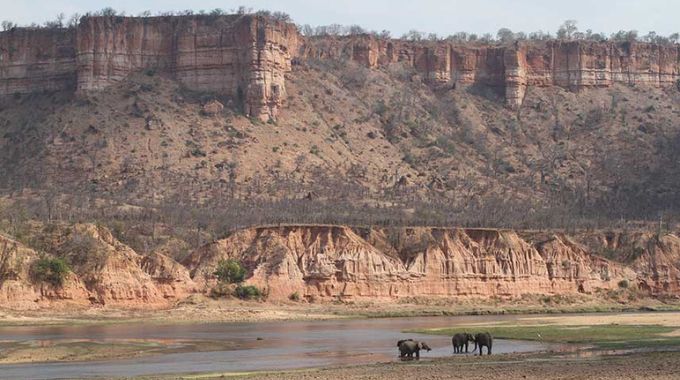Gonarezhou National Park, aptly named “The Place of Elephants,” stands as Zimbabwe‘s second-largest national park, encompassing over 5,000 square kilometers of untouched wilderness.
Situated in the southeastern corner of the country, it shares borders with Mozambique and South Africa, forming a crucial component of the Great Limpopo Transfrontier Park.
Renowned for its diverse wildlife, dramatic landscapes, and the iconic Chilojo Cliffs, Gonarezhou offers an unparalleled safari experience for those seeking adventure off the beaten path.
History and Background of Gonarezhou National Park
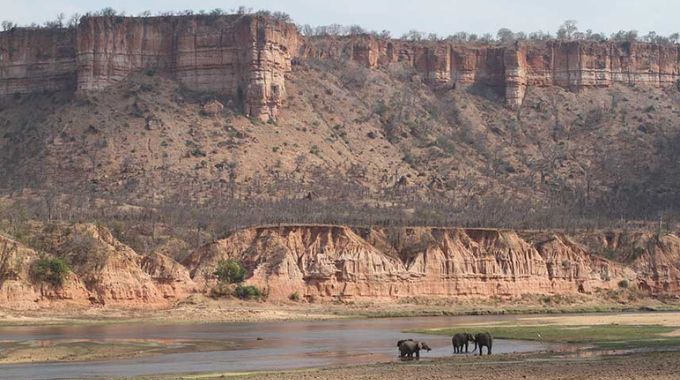

Established in 1934 as a game reserve, Gonarezhou was designated a national park in 1975.
The name “Gonarezhou” derives from the Shona language, meaning “Place of Elephants,” reflecting the area’s significant elephant population.
Throughout its history, the park has faced challenges, including periods of conflict and poaching, which impacted wildlife numbers and infrastructure.
In 2017, a landmark partnership was formed between the Zimbabwe Parks and Wildlife Management Authority and the Frankfurt Zoological Society, leading to the creation of the Gonarezhou Conservation Trust.
This collaboration aims to ensure sustainable conservation efforts, infrastructure development, and community engagement, securing the park’s future as a haven for biodiversity.
Geography and Landscape
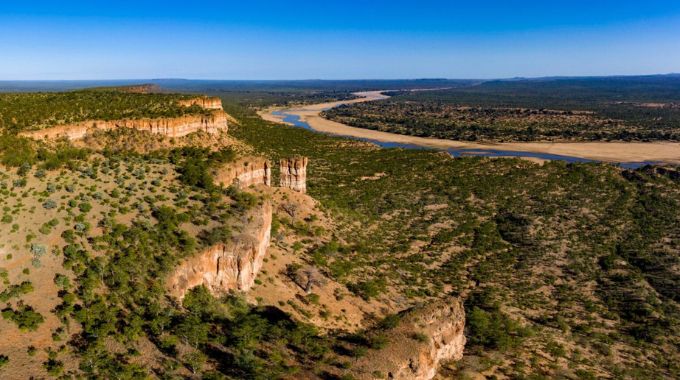

Gonarezhou’s terrain is a mosaic of rugged landscapes, featuring riverine forests, woodlands, and open savannahs.
The park is traversed by three major rivers: the Save, Runde, and Mwenezi. These waterways are vital to the park’s ecosystem, supporting a rich diversity of flora and fauna.
One of the park’s most striking features is the Chilojo Cliffs, towering red sandstone formations that rise majestically above the Runde River valley.
These cliffs offer panoramic vistas and are a testament to the area’s geological history.
The climate is characterized by a wet season from November to March, bringing lush vegetation and abundant wildlife sightings, and a dry season from April to October, when animals congregate around dwindling water sources, making it an ideal time for game viewing.
Gonarezhou’s Wildlife and Biodiversity
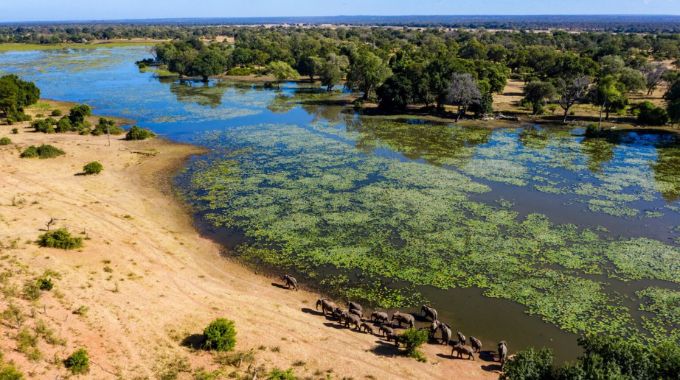

Gonarezhou is a sanctuary for an array of wildlife. The park boasts a significant population of elephants, with over 11,500 individuals, one of the highest densities in Africa.
Predators such as lions, leopards, and the elusive cheetah roam the plains, while herbivores including buffalo, giraffe, and various antelope species graze the savannahs.
Notably, the park is home to unique species like the African wild dog and the nyala antelope.
Bird enthusiasts can delight in over 400 recorded bird species, including the rare Taita falcon, Pel’s fishing owl, and a range of raptors and waterfowl.
Conservation challenges persist, particularly concerning poaching and human-wildlife conflict. However, concerted efforts by the Gonarezhou Conservation Trust and partner organizations focus on anti-poaching initiatives, community outreach, and habitat restoration to protect and preserve this biodiversity hotspot.
Safari and Activities
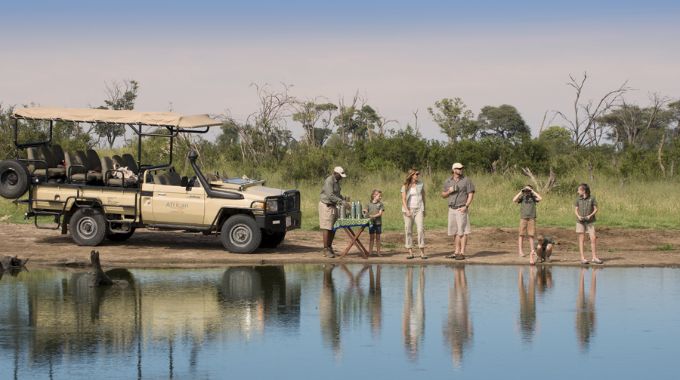

Gonarezhou offers a plethora of activities for visitors seeking an immersive wilderness experience:
- Game Drives: Both self-drive and guided game drives are available, allowing visitors to explore the park’s extensive road network and witness its abundant wildlife.
- Walking Safaris: For a more intimate encounter with nature, walking safaris led by experienced guides provide insights into the park’s ecosystems, tracking wildlife on foot and learning about the intricate web of life that sustains this wilderness.
- Bird Watching: With its diverse habitats, Gonarezhou is a bird watcher’s paradise. Key locations such as the pans and riverbanks offer excellent opportunities to spot both resident and migratory species.
- Fishing: The park’s rivers are home to various fish species, and fishing is permitted in designated areas, offering a tranquil way to connect with the environment.
- Cultural Experiences: Engaging with local Shangaan communities provides a cultural dimension to the safari experience, where visitors can learn about traditional practices, music, and crafts.
Accommodation Options
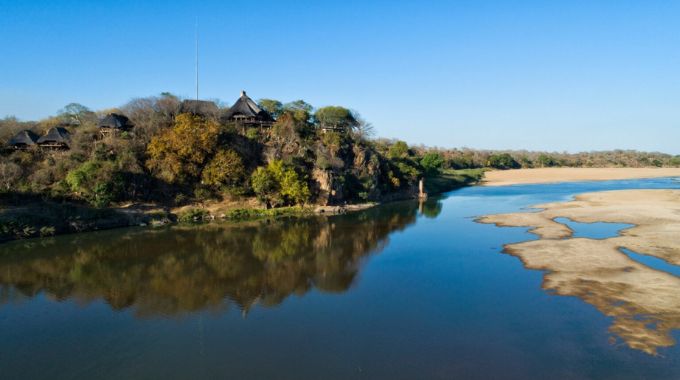

Gonarezhou caters to a range of accommodation preferences, ensuring visitors can find suitable lodging to enhance their safari experience:
- Luxury Lodges: For those seeking comfort and exclusivity, options such as Chilo Gorge Safari Lodge offer well-appointed rooms, gourmet dining, and guided activities, all set against the backdrop of the park’s stunning landscapes.
- Self-Catering Camps: Facilities like Chipinda Pools and Chinguli Campsites provide self-catering options with basic amenities, allowing visitors to immerse themselves in the wilderness while maintaining a degree of comfort.
- Exclusive Wilderness Camping: For the adventurous, exclusive campsites offer secluded spots within the park, where one can camp amidst nature with minimal facilities, providing a raw and unfiltered connection to the environment.
How to Get There


Accessing Gonarezhou requires careful planning due to its remote location:
- By Road: The park is accessible via several entry points. From Harare, the journey to the northern entrance near Chipinda Pools is approximately 600 kilometers, typically requiring a full day’s drive. The southern entrances near Mabalauta are accessible from Bulawayo and South Africa. A 4×4 vehicle is recommended, especially during the wet season, due to challenging road conditions.
- By Air: Charter flights can be arranged to airstrips within the park, such as those at Chipinda Pools and Mabalauta. Additionally, Buffalo Range Airport near Chiredzi offers facilities for customs and immigration, accommodating international arrivals.
Travel Tips and Safety
To ensure a safe and enjoyable visit to Gonarezhou National Park, consider the following recommendations:
- Best Time to Visit: The dry season, from April to October, is ideal for wildlife viewing as animals congregate around water sources. However, the wet season (November to March) brings lush landscapes and is excellent for bird watching, though some areas may be inaccessible due to flooding.
- Permits and Park Fees: Visitors are required to obtain entry permits, which can be arranged at the park’s entry gates or through the Zimbabwe Parks and Wildlife Management Authority. It’s advisable to check the latest fees and regulations before your visit.
- Packing Essentials:
- Clothing: Pack lightweight, breathable fabrics in neutral colors to blend with the environment. Layering is recommended to accommodate temperature variations between day and night. Long sleeves and pants help protect against insects and sun exposure.
- Footwear: Sturdy, comfortable walking shoes or boots are essential, especially for walking safaris.
- Sun Protection: Bring a wide-brimmed hat, sunglasses, and high-SPF sunscreen to guard against the intense African sun.
- Insect Repellent: Use repellents containing DEET to protect against mosquitoes, as the park is located in a malaria-endemic area. Consult with a healthcare provider about antimalarial medications prior to your trip.
- First Aid Kit: Include basic medical supplies, personal medications, and any necessary prescriptions.
- Binoculars and Camera: Essential for wildlife viewing and capturing memorable moments.
- Vehicle Requirements: While some areas of the park are accessible with high-clearance two-wheel-drive vehicles during the dry season, a four-wheel-drive vehicle is recommended for traversing more remote areas and for river crossings. Traveling with two vehicles and carrying recovery equipment is advisable for added safety.
- Health Precautions: In addition to malaria prevention, ensure you are up-to-date with routine vaccinations. Carry sufficient drinking water and stay hydrated, especially during the hot midday hours.
- Safety Around Wildlife:
- Maintain Distance: Always observe animals from a safe distance and avoid actions that may disturb or provoke them.
- Stay in Vehicles: Remain inside your vehicle during game drives unless accompanied by a qualified guide in designated areas.
- Nighttime Caution: Avoid walking outside after dark, as predators are more active during these hours.
- Communication: Mobile network coverage within the park is limited. Consider carrying a satellite phone or a two-way radio for emergency communication.
- Local Customs and Regulations: Respect local customs and adhere to park rules, including designated camping areas and fire regulations. Engaging with local communities can enrich your experience and support sustainable tourism efforts.
Conservation Efforts and Sustainable Tourism
Gonarezhou National Park is committed to preserving its unique ecosystems through comprehensive conservation initiatives:
- Gonarezhou Conservation Trust (GCT): Established as a partnership between the Zimbabwe Parks and Wildlife Management Authority and the Frankfurt Zoological Society, the GCT manages all aspects of the park, focusing on ecological integrity, sustainable tourism, and community engagement.
- Research and Monitoring: The park conducts ongoing ecological research to inform management decisions. Projects include wildlife population monitoring, habitat assessments, and studies on human-wildlife interactions. Researchers are encouraged to contribute to these efforts to enhance conservation outcomes.
- Community Involvement: Recognizing the importance of local communities in conservation, the GCT collaborates with neighboring villages to promote coexistence with wildlife. Initiatives aim to mitigate human-wildlife conflicts and provide benefits through sustainable resource use and tourism opportunities.
- Sustainable Tourism: The park offers a range of tourism products, including traditional campsites, tented camps, and chalets, designed to minimize environmental impact while providing memorable visitor experiences. Revenue generated supports conservation and community development projects.
Visitors play a crucial role in supporting these conservation efforts. By practicing responsible tourism—such as adhering to park guidelines, minimizing waste, and respecting wildlife—you contribute to the preservation of Gonarezhou’s natural heritage for future generations.
Gonarezhou National Park stands as a testament to Zimbabwe’s dedication to conservation and sustainable tourism.
Its vast landscapes, rich biodiversity, and cultural heritage offer an unparalleled safari experience.

